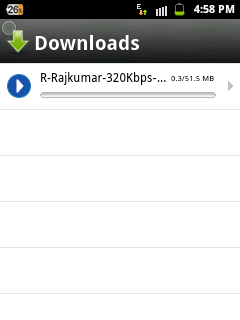Phishing email messages are designed to steal your identity. They ask
for personal data, or direct you to websites or phone numbers to call
where they ask you to provide personal data. A few clues can help you
spot fraudulent email messages or links within them.
What does a phishing email message look like?
Phishing email messages take a number of forms:
- They might appear to come from your bank or financial institution, a
company you regularly do business with, such as Microsoft, or from
your social networking site.
- They might appear to be from someone you in your email address book.
- They might ask you to make a phone call. Phone phishing scams direct
you to call a phone number where a person or an audio response unit
waits to take your account number, personal identification number,
password, or other valuable personal data.
- They might include official-looking logos and other identifying
information taken directly from legitimate websites, and they might
include convincing details about your personal history that scammers
found on your social networking pages.
- They might include links to spoofed websites where you are asked to enter personal information.
Here is an example of what a phishing scam in an email message might look like.

Example of a phishing email message that includes threat of account
closure and malicious links designed to trick you into entering your
account information.
To make these phishing email messages look even more legitimate, the
scam artists use graphics that appear to go to the legitimate websites
(Windows Live Hotmail and Woodgrove Bank, respectively), but actually
take you to a phony scam site or possibly a pop-up window that looks
exactly like the official site.
Here are a few phrases that are commonly used in phishing email scams:
“Verify your account.”
Businesses should not ask you to send passwords, logon information or
user names, Social Security numbers, or other personal information
through email.
If you receive an email message from Microsoft or any other business
asking you to update your credit card information, do not respond: This
is a phishing scam.
“You have won the lottery.”
The lottery scam is a common phishing scam known as advanced fee
fraud. One of the most common forms of advanced fee fraud is a message
that claims that you have won a large sum of money, or that a person
will pay you a large sum of money for little or no work on your part.
The lottery scam often includes references to big companies, such as
Microsoft. There is no Microsoft Lottery.
“If you don’t respond within 48 hours, your account will be closed.”
These messages convey a sense of urgency so that you’ll respond
immediately without thinking. A phishing email message might even claim
that your response is required because your account might have been
compromised.
What does a phishing link look like?
Sometimes phishing email messages direct you to spoofed websites.
HTML-formatted messages can contain links or forms that you can fill
out just as you would fill out a form on a legitimate website.
Phishing links that you are urged to click in email messages, on
websites, or even in instant messages, may contain all or part of a real
company’s name and are usually masked, meaning that the link you see
does not take you to that address but somewhere different, usually an
illegitimate website.
Notice in the following example that resting (but not clicking) your
mouse pointer on the link reveals the real web address, as shown in the
box with the yellow background. The string of cryptic numbers looks
nothing like the company’s web address. This is a suspicious sign.

Example of a masked web address.
Cybercriminals also use web addresses that resemble the names of
well-known companies but are slightly altered by adding, omitting, or
transposing letters. For example, the address
“www.microsoft.com” could appear instead as:
- www.micosoft.com
- www.mircosoft.com
- www.verify-microsoft.com
This is called “typo-squatting” or “cybersquatting.”
Credit – Microsoft














